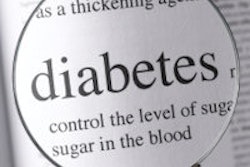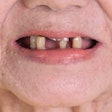The American Diabetes Association feels so strongly about the link between periodontal disease and type 2 diabetes that the group invited a number of dentists to share their thoughts on this growing problem during a special symposium at the 68th annual meeting of the American Diabetes Association this week in San Francisco.
According to the American Dental Association, nearly 10% (21 million) of the U.S. population has diabetes, which means U.S. dentists can expect to have more than 120 diabetic patient visits per year. Some 5% of diabetic patients are type 1, while the other 95% are type 2 -- the form that develops in adulthood and is linked to excess weight and a sedentary lifestyle.
Dental disease and the associated inflammation is an early warning sign of diabetes and its complications. In addition, diabetics with periodontal disease have a harder time controlling blood sugar levels.
"One of the many complications of diabetes is a greater risk for periodontal disease," said Maria E. Ryan, D.D.S., Ph.D., a professor of oral biology and pathology at Stony Brook University, New York, at the diabetes association dental symposium. "If you have this oral infection and inflammation, as with any infection, it's much more difficult to control blood glucose levels."
A key finding to be reported at the diabetes meeting was the fact that in prediabetic patients -- those who are insulin-resistant but are not yet presenting with the disease -- the level of oral disease seems to correlate with the insulin resistance, she added.
"We have found evidence that the severity of periodontal disease is associated with higher levels of insulin resistance, often a precursor of type 2 diabetes, as well as with higher levels of A1C, a measure of poor glycemic control of diabetes," Dr. Ryan said at the meeting.
Recent studies have also shown that having periodontal disease makes those with type 2 diabetes more likely to develop worsened glycemic control and puts them at much greater risk of end-stage kidney disease and death, according to George W. Taylor, Dr.P.H., D.M.D., an associate professor of dentistry at the University of Michigan.
|
What dentists can do While patients with well-controlled diabetes can often be treated in similar ways as nondiabetic patients, diabetic patients often do have special needs. The American Dental Association offers these tips for working with diabetic patients:
|
He pointed to an analysis of the National Health and Nutrition Examination Survey of the U.S. population data between 1988 and 1994, in which he and his colleagues found that people with periodontal disease were twice as likely to be insulin-resistant than those without such disease. This result was found after controlling for other characteristics that would be associated with insulin resistance, such as obesity, lipids, exercise, and other markers of inflammation, and whether they had diabetes.
Dr. Taylor also reported on studies at the University of Michigan and elsewhere that further demonstrate the association between periodontitis and the complications of type 2 diabetes.
"Given the numerous medical studies showing that good glycemic control results in reduced development and progression of diabetes complications, we believe there is the potential that periodontal treatment can provide an increment in diabetes control and subsequently a reduction in the risk for diabetes complications," Dr. Taylor said.
For example, a recent set of observational studies of southwestern U.S. Pima Indians, a population with a very high rate of type 2 diabetes, investigated whether those with periodontitis are more likely to develop poorer glycemic control. Dr. Taylor noted that those with periodontitis were more than four times as likely to develop worsened glycemic control after two years of follow-up.
Dr. Ryan recommends that the medical and dental communities work together to play a more proactive and preventive role in treating diabetic patients. In addition to checking for bleeding gums and other signs of gingivitis, if a patient's glycemia has been difficult to control, the physician should ask when the patient last visited a dentist, whether periodontitis has been diagnosed, and, if so, whether treatment has been completed. A consultation with the dentist might then be appropriate to discuss whether periodontal treatment has been successful or if a more intensive approach with oral or subantimicrobial antibiotics is in order.
"Just as it is difficult to control diabetes while the patient has an infected leg ulcer, the same applies when there's infection and inflammation of the gums," she said. "Diabetes educators and healthcare providers need to be informed of this and refer their patients to dentists for evaluation," she noted in an interview with DrBicuspid.com.
In addition to helping diabetic patients manage their disease through better oral health and regular checkups, dental care providers can also play an important role in helping to diagnose patients whose diabetes has not yet been detected, Dr. Ryan added.
"The Centers for Disease Control estimates that 40% of people with diabetes don't know they have it," she said. "And certainly dental care providers are in a position to help identify people at risk of diabetes. We know that periodontal disease leads to heightened levels of C-reactive proteins, and studies are now showing that people with elevated C-reactive protein levels are the most likely to convert to diabetes within five years. But if you treat the periodontal disease, you can reduce the levels of A1C. Now we need to find out if treating periodontal disease will delay the onset of diabetes, and this we don't know yet."


















